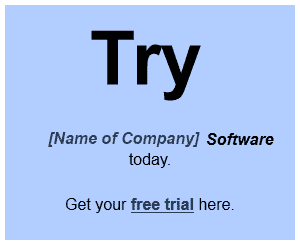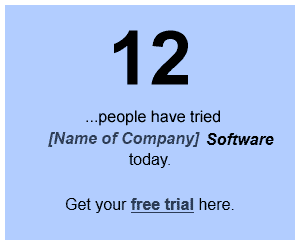Social Proof & Click-through Rate
Background:
Before making decisions, people often look to their peers for assurance. We tend to assume that if a crowd is all making the same decision, that decision must be a good one. This is why TV sitcoms often use "canned laughter." When a pre-recorded audience laughs it's easier to feel like a joke is funny. Compare this to the time David Letterman delivered a monologue to an empty theater (during Tropical Storm Sandy in 2012). After a couple jokes the home viewer was left wondering how Letterman got his own show. The jokes had lost a lot of value because the crowd wasn't there for validation.
Many webmasters have been keen on the idea of Facebook & Google+ buttons, ratings, reviews, and other forms of social feedback. Displaying a large number of "likes," for example, implies that people approve of a website. This can help gain approval from new visitors. Most webmasters that use these methods of social feedback feel they are beneficial to their marketing efforts, but we would like to go a step beyond those assumptions and scientifically validate the effects of social proof on the web. In this test we will use social proof in a web advertisement and measure its impact on clickthrough rate.
The Experiment:
The following software advertisements were tested:
 |
 |
| This ad acted as a control. It encourages visitors to download the software, but does not mention that other users have downloaded it. No information about the software is listed. | This ad shows a tally of free-trials that were downloaded by other users within a 24-hour period. This number never dropped below 1 during testing. It encourages people to try the software based only on the fact that other people have tried it. No information about the software is listed. |
Results:
The click totals were remarkably close, with control outperforming social proof by only a single click.
Control Clickthrough Rate: 1.19%
Social Proof Clickthrough Rate: 1.18%.
However, there was a significant difference in user behavior between the two ads. Users who clicked the social proof ad remained on the website 155% longer than users that clicked the control ad.
Control - Average Time on Site: 0:54
Social Proof - Average Time on Site: 2:18
Conclusions:
Social proof marketing can have a valuable effect on decision making online. Because scams, phishing, and other deceptive techniques are rampant on the web, people have become skeptical of new offers from unfamiliar companies. Showing users that they are not alone in their decision-making can create a comfortable atmosphere, increasing the amount of time users spend learning about your product.